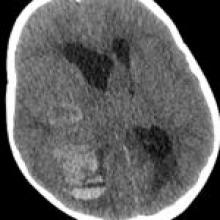May 12, 2022
A 4-year-old child born of second-degree consanguineous parentage presents to the emergency department in status epilepticus; history of T-cell acute lymphoblastic leukemia diagnosed 8 months back; father had colon cancer and paternal grandmother had cervical cancer; clinical examination shows multiple hyperpigmented macules on the trunk.







